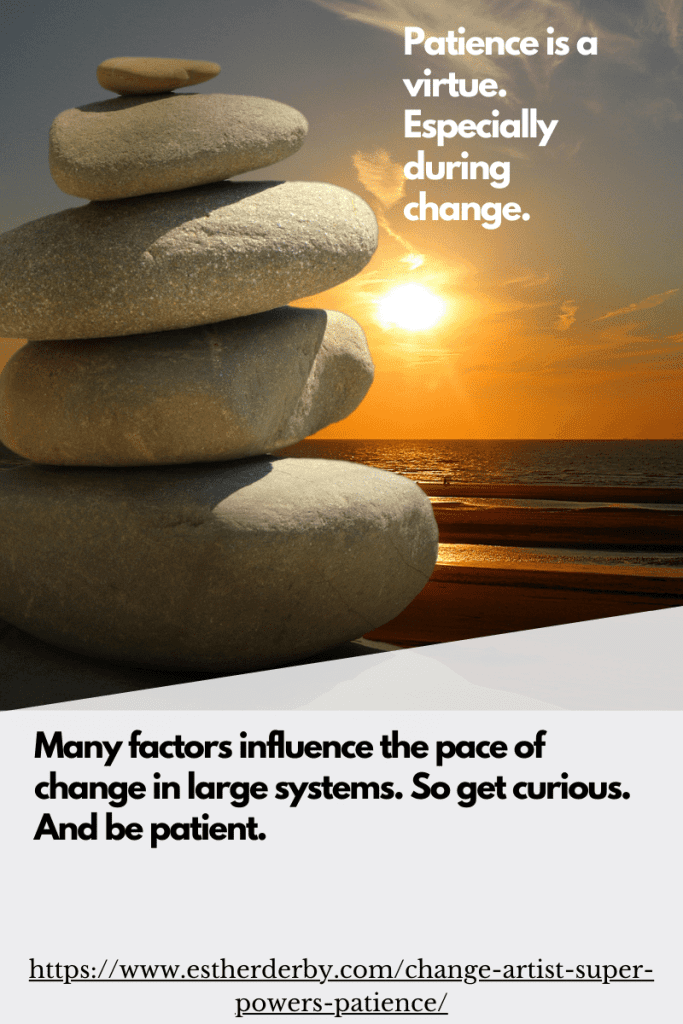John was out of patience.
“It shouldn’t take this long!” John, the VP of Development, snapped. “This is a simple change. It is just not that hard!”

The “it” John referred to was a set of measures and metrics. He believed that if all the teams reported these, everyone would be better able to plan releases. He’d be better able to build trust with customers. He was right that the measures would help both in planning work and in communicating with customers. He was wrong in his expectation that this change would happen quickly.
The metrics that seems easy and obvious to John did not seem so to the others. John had studied these measures, understood the theories behind them and believed they would help him, development teams, and the company. He’d already climbed the learning curve. The people who would need to change their routines to provide him those metrics had not. To the recipients of John’s request, it was another demand on their time, one that worried them. John said the metrics would help with planning—but would he also use them to rank teams and managers? Furthermore, using the tracking tool John preferred was truly an ordeal.
Consider What Else is Going On
Patience is a virtue, especially when it comes to change in large systems. Before you get frustrated at the pace of change, consider these factors:
- Number of new concepts involved
- Alignment between existing structures, processes, and reward systems that aren’t slated to change
- Number of new practices/processes involved
- New and modified infrastructure required
- What people will lose
- Effort involved
- What people fear
- Amount of slack in the system
- What else are people working on
- Interest from the next level manager (not just a distant executive)
- Number of other changes people are absorbing
John skipped most of this factors when he set his own expectations. To him, collecting these metrics seemed simple. To the people who would track and enter the data, there were practical and emotional hurdles.
So, be patient. Empathize, understand concerns, get curious about the context. But don’t become a doormat. Armed with a broader understanding, jointly develop a plan and support people through the change. Things didn’t get the way they are in a day, and they seldom change for the better in a day, either.




0 Comments